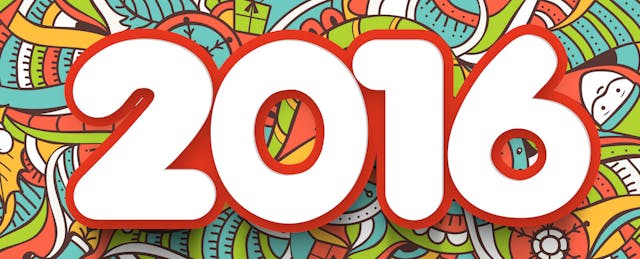The cicadas are singing, the sunsets are earlier and Target sports four aisles of back to school items. This can only mean one thing—the new school year is imminent! Even after decades in the classroom, I still get butterflies in anticipation of the first day of school.
Forget January. The back-to-school season is a perfect time for educators to make new year’s resolutions, before our plates become full with the busyness of teaching. Here are my five resolutions for the 2016 - 2017 school year:
1. Try a new approach in class
Each year, I seek out one approach I haven’t used before and add it to my repertoire. My go-to resource is @Doug Lemov's Teach Like a Champion 2.0, which includes over 60 techniques that are practical, engaging and easy to incorporate into everyday lessons. Take a technique Lemov calls Making it Accessible, which suggests ways to help kids connect with rigorous content rather than run from it. This seems especially relevant to my more risk adverse students, many of whom shy away from what they think will be difficult. Lemov suggests using Dweckian-type statements rather than feeding students’ fears. For example:
- “Lots of people don’t understand this until they get to college, but you’ll know it now. Cool.”
- "There's a great story behind this!”
- "We’re going to have some fun as we do it.”
This last one is my standby. As spring comes around and my students beg me to go outside daily, I get creative and connect with the teenagers’ inner 6-year-olds. Collision theory in chemistry? Sure, let’s just play Red Rover. 17-year-olds are a little more competitive than first graders, but the same rules apply—run fast (energy) and hit the middle of their hands (angle of approach) in order to break kids apart (rearrangement). I have former students who tell me Red Rover is one of their fondest memories from chemistry class. Playing at all ages can increase creativity, so a new game is always in my toolbox.
For teachers without many seasons under their belts, check out this list of 50 classroom procedures; it’s a good double check to make sure you’ve thought of everything—from group work to digital citizenship to classroom discussion.
2. Connect (or disconnect . . .)
The instructional technology space is a fabulous way to find and interact with personal learning communities and leverage other experts in your field. But sometimes the biggest challenge is wading through the options. We’ve all left conferences having registered for umpteen product demos and weekly updates. Sure, each tool and toy looked cool at the time. But later you may find yourself bombarded with emails about products and services that you don’t use or even remember.
So go ahead and unsubscribe, deregister, walk away—and instead recommit to the few online communities you’ll really use. I suggest:
- Edutopia is a good first stop for all levels of experience, whether you’re posting your own questions or just listening from the sidelines.
- Facebook’s education groups have something for everyone.
- Slack is ideal for those ambitious folks who want to create their own communities and invite others to join. It's easy to navigate and makes creating groups and posts simple.
3. Get to know your students
Not all of us are meant to be coaches or advisors, but all of our students perk up when we show interest in their lives and the things that matter to them. Budding activists in your classroom? Encourage them to get involved in anti-bullying month this October, and together add your digital signatures to an online petition.
Religious holidays around the corner? I always ask my students to share stories of family celebrations after holiday breaks. A few years ago, however, I noticed that not all the kids participated in these discussions. When my ignorance became obvious, I decided to learn more about my Muslim students, their culture and holidays. Now I reach out to these students after their absences for holidays such as 'EId Al-Fitr—the Festival of Breaking the Fast. We devote an entire period to their stories, and our classroom bonds are stronger because of it.
4. Learn something new because you want to
Sure, we all need to fulfill our clock hour requirements for relicensure. But that doesn’t have to mean boring PowerPoints or motivational speakers who have never set foot in a classroom. Search for learning opportunities that can truly fuel your passion and fit your life, where you can learn at your own pace. Some of my favorites are short videos from inspirational practitioners, including:
- Angela Lee Duckworth talking about grit.
- The Danger of a Single Story, by Chimamanda Ngozi Adichie.
- Anything from Crash Course, where you can learn about moon phases, the Bronze Age, and the chemical mind—and much more.
Also take advantage of credit bearing opportunities that fulfill your annual goals. Capella University has more than 20 self-paced free courses in the area of digital teaching and learning, including these:
- For teachers assigned a 1:1 classroom for the first time, there is help with basic safety, device management, and creating a flipped lesson.
- Seasoned educators can explore adaptive learning and personalized learning through gaming among other subjects.
- Interested in leadership roles? Check out this course on instructional coaching.
By adding new skills, micro-credentials and even graduate degrees or certificates to your resume, you can open professional doors.
5. Steer students toward resources—and help them relax
Every year I point my students toward new websites I’ve found that offer extra help with studying and mastering material. Some of my favorite recommendations are:
- FREE ACT test prep on Sophia offers high quality materials from teachers and past ACT proctors.
- WatchKnowLearn features online videos about all subjects for all ages, vetted and organized.
- cK-12 has simulations, sports-themed lessons, and videos; there is something for every student.
- YouTube EDU organizes videos from the likes of Sesame Street and Harvard.
Perhaps more importantly, I advise my students to start prioritizing and—yes—dropping out of activities. Teenage depression and anxiety is increasing, and we need to teach our students that they don't need to do it all. Instead, encourage them to relax and have fun; as most teachers know, play can actually increase happiness. Remind parents that kids who have family dinners earn higher grades and are less likely to pursue risky behaviors.
I’ve also started to encourage hobbies. I know the days of wood burning sets and leather sewing kits are past, but there are modern options such as PokemonGo. (Yes, I’m a believer; my own kids think I’m the cool mom!) Lanyard bracelets (a garage sale favorite for kids wanting to earn money) have made a comeback. And my favorite timeless activity? Slumber parties. (Okay, technically not a hobby—but a great social outlet). Suggest your own ideas; the worst that can happen is that students laugh at your suggestions. Some may secretly give one a try.
This year, challenge yourself to go beyond the same old classroom resolutions we make to ourselves every year, such as grading tests faster or not waiting until Monday morning to make copies. Better yet, skip the copies and go paperless. Challenge the unwritten rule of the quiet classroom, and set your kids and yourself free by teaching outdoors. Try to connect your contract and administrative goals to the passion you felt during your first years of teaching. Take advantage of your required professional growth and have fun learning something novel. It’s a new year—the sky’s the limit.



